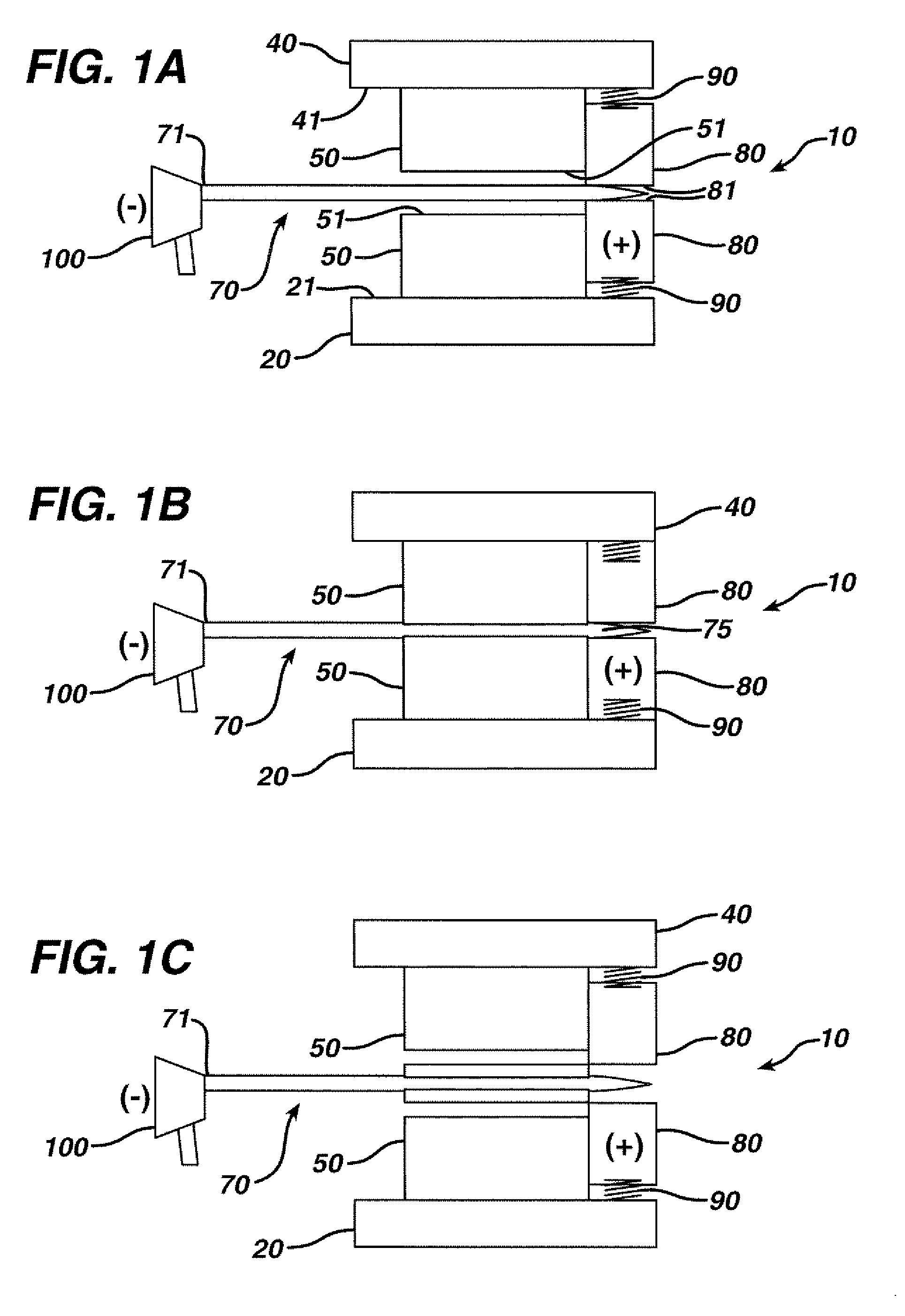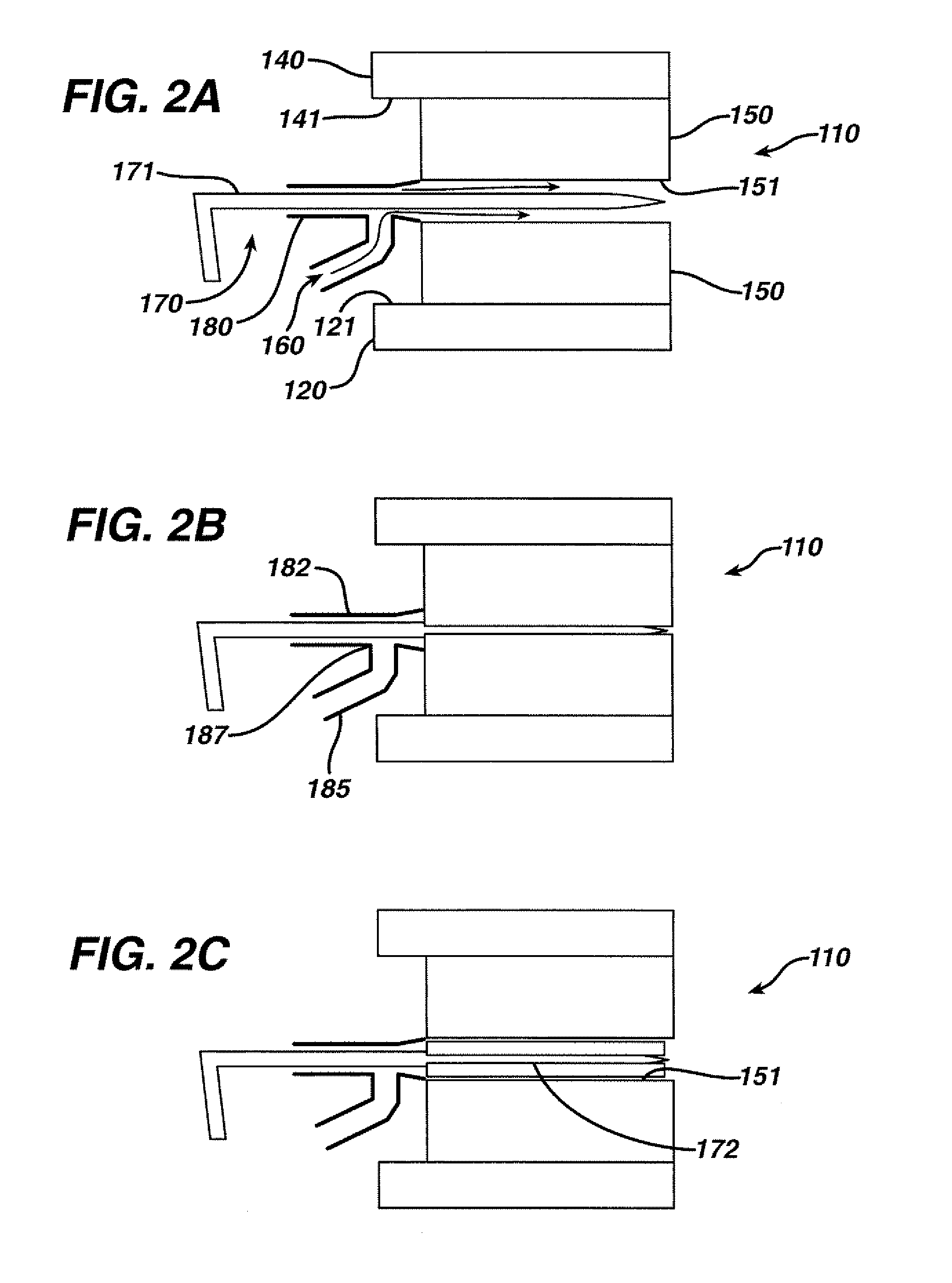Thermal forming of refractory alloy surgical needles and fixture and apparatus
a technology of refractory alloy and surgical needles, which is applied in the field of surgical needles, can solve the problems of inability to thermally form many refractory alloys at room temperature, and the difficulty of manufacturing refractory alloy surgical needles, and the inability of conventional needle forming methods to use refractory alloys
- Summary
- Abstract
- Description
- Claims
- Application Information
AI Technical Summary
Benefits of technology
Problems solved by technology
Method used
Image
Examples
example 1
[0059]Needle blanks comprised of a tungsten-26% rhenium alloy with a nominal starting wire diameter of 0.203 mm were pressed between two opposing carbide dies to produce parallel opposed body flats. The tungsten-26% rhenium material from which the needle blank was made was acquired from Toshiba Corporation (Yokohama, Japan) and exhibited a breaking strength of 3450 MPa in wire form. A conventional pneumatic uniaxial press was used for the experiments with flat carbide dies. The length of the needle blank, over which body flats were formed, was at least 1 cm. In one set of experiments the needle blanks were pressed to various thicknesses at room temperature and visually examined for cracks at 30× magnification with a stereoscope. It was found that cracks could be formed longitudinally along the length of the wire when the body flat was coined to a thickness equal to or less than ˜0.175 mm. In a parallel set of experiments, the W-26% Re needle blanks were resistively heated immediatel...
example 2
[0060]In order to assess the ductility of the suture needles of Example 1, a reshape test was performed wherein each needle was held near its proximal end with suitable, conventional needle holders and bent back and forth through 180 degrees multiple times until fracture of the needle occurred. Each bend though 90 degrees from the initial shape of the needle was given a ½ count. The total number of counts is a measure of ductility with the higher numbers indicating greater ductility. Most suture needles are required by their manufacturers to exhibit a reshape value of at least 1.0. The W-26% Re suture needles made in Example 1 above exhibited reshape values in excess of 4.0 thereby meeting and exceeding the standard requirement.
[0061]The novel methods of the present invention for thermoforming surgical needles have numerous advantages and benefits. These advantages and benefits include: production of refractory alloy suture needles with flattened or I-beam body sections, coined need...
PUM
| Property | Measurement | Unit |
|---|---|---|
| Temperature | aaaaa | aaaaa |
| Temperature | aaaaa | aaaaa |
| Temperature | aaaaa | aaaaa |
Abstract
Description
Claims
Application Information
 Login to View More
Login to View More - R&D
- Intellectual Property
- Life Sciences
- Materials
- Tech Scout
- Unparalleled Data Quality
- Higher Quality Content
- 60% Fewer Hallucinations
Browse by: Latest US Patents, China's latest patents, Technical Efficacy Thesaurus, Application Domain, Technology Topic, Popular Technical Reports.
© 2025 PatSnap. All rights reserved.Legal|Privacy policy|Modern Slavery Act Transparency Statement|Sitemap|About US| Contact US: help@patsnap.com



